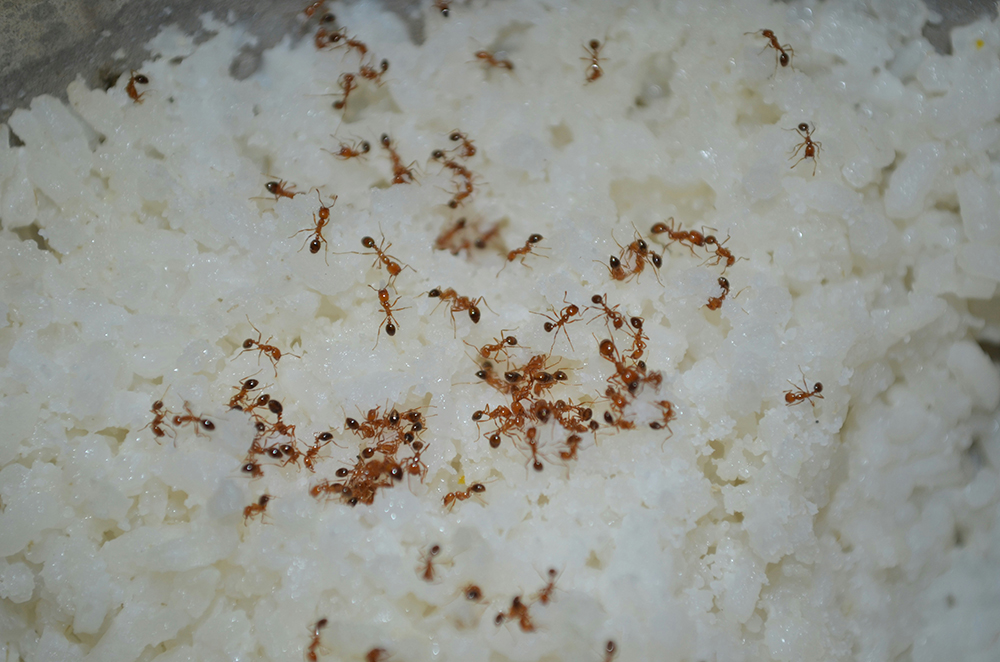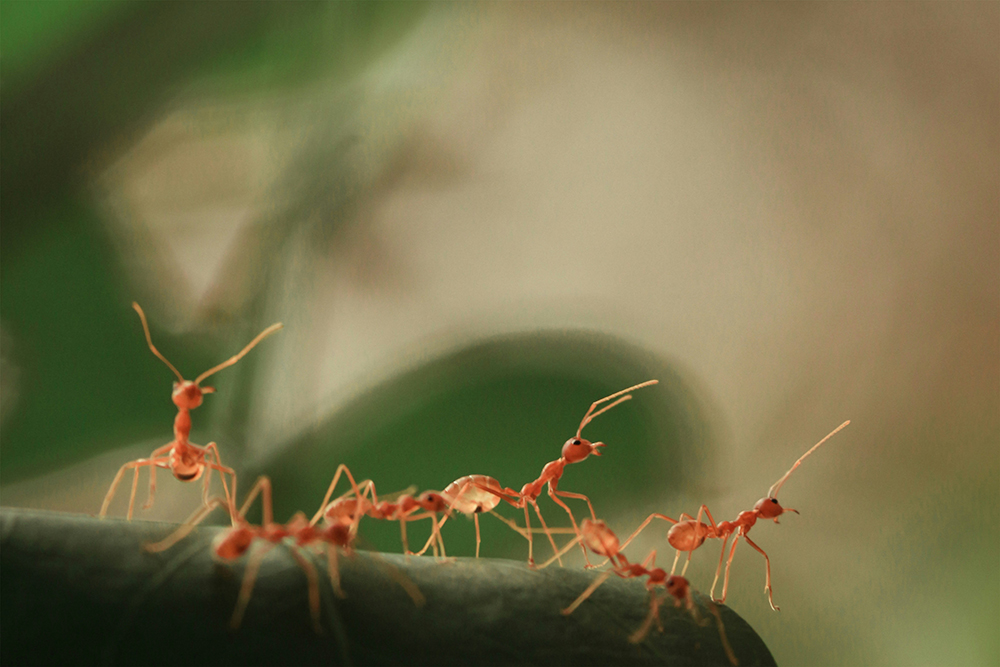Seminar Dates: November 12, 2025 9:45 AM
Seminar Cost: $45.00 Register Now
Seminar Description:
Some ant species “farm” and protect plant feeding insects for their honeydew, a sweet, nutritious liquid they secrete. In this way managing ants helps control honeydew producing pests like aphid, whitefly, mealybug, scale, and psyllid.

Killing the ants makes such pests more vulnerable to their natural enemies. Ant control alone can sometimes clear up persistent pest populations, especially where a diverse natural enemy complex flourishes.
A low-toxicity borate based sweet bait attracts ants by mimicking the natural “honeydew.”
Benefits
• Easy to use, indoors or outdoors
• Provides long term control by eliminating the queen in the ant nest
• Prevents spread of invading ants
• Low toxicity to mammals
• Uses powerful attractant to lure ants
• Acceptable for organic farming
Baits are used in bait dispensers, such as AntPro, Antopia, or Ants-No-More. Ants are attracted to the simulated honeydew mixture. Uni-Tract II is an insect attractant proven to enhance bait acceptance by a variety of sweet and protein feeding ants.

Gourmet Liquid Ant Bait is a popular bait labeled for use against ants as well as cockroaches. It is most effective against common household ants, including carpenter, ghost, Argentine, crazy, white footed and big headed ants, but will not control pharaoh, harvester or fire ants. It is designed to work slowly, so foraging ants can make multiple trips between the bait dispenser and their colony, distributing it to their young and the queen until they eventually succumb to its poisonous effects.
Colonies can be located using solo cups of plain sugar syrup (or Pringles potato chips for fire ants) placed in an area. Ants will find the cups of bait and take it back to the nest. They return to the nest in a straight path, making it easy to see where the nest is. The nests can be then disrupted mechanically or by drenching with a liquid mix containing orange oil.
Learning Objectives:
1. Baiting ants with a low-risk borate-based ant bait is an effective strategy for managing ants.
2. Ant colonies can be located with bait cups containing sugar or fat.
3. Colonies can be disrupted mechanically or with liquid mix, such as of orange oil, humic acid, molasses and compost extract.

Ron Whitehurst
Ron Whitehurst, specialist in biological pest control and restoration of agro-ecosystems, consults for farmers, gardeners, consultants and practitioners. He facilitates learning about insect pests and solutions in field, greenhouse, landscape, garden and animal rearing situations. His lively discussions about insect lifecycles and predator-prey relationships make the principles of biocontrol easy to understand for both lay and technical audiences. He is a member of the California Sustainable Pest Management Work Group, working with 25 stakeholders to develop a pathway to a future with less use of toxic pesticides.
Ron is a California licensed Pest Control Advisor and co-owner of Rincon-Vitova Insectaries, Inc. that produces and markets supplies for biological pest control and agroecology. With a BA in biology from Indiana University, Ron early on worked as an organic garden writer, and helped organize an organic grower association. He has been communicating about organic methods of farming and gardening for over 40 years. Since 1997 he has guided people through the steps of creating and biologically managing ecosystems to grow healthy plants to minimize and control pests, using insect habitat, cultural methods, beneficial insects, and soft pesticides when needed. He has led projects for the Dietrick Institute for Applied Insect Ecology, co-located with Rincon-Vitova. An avid gardener, he loves making compost, building soil, and creating bio-intensive food producing landscapes.

